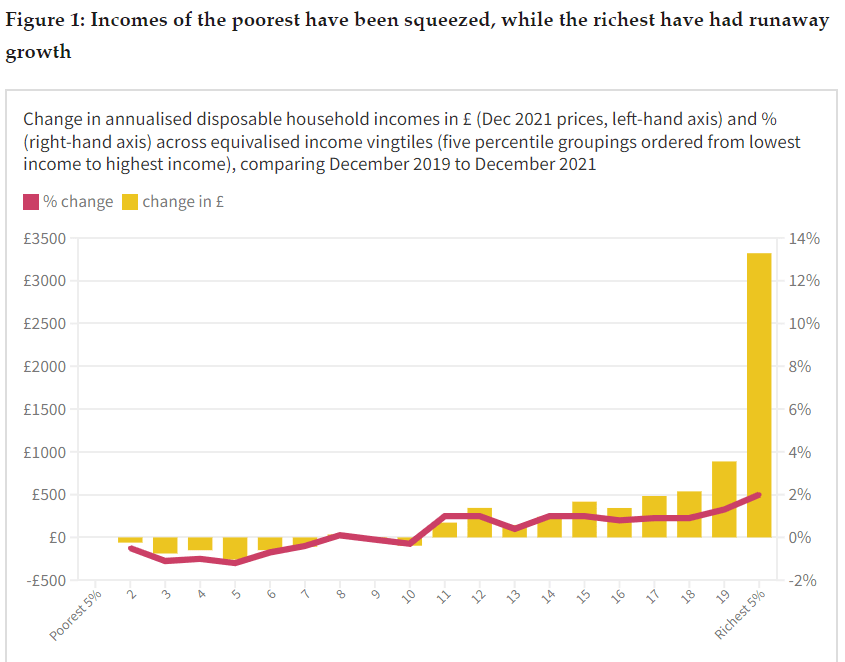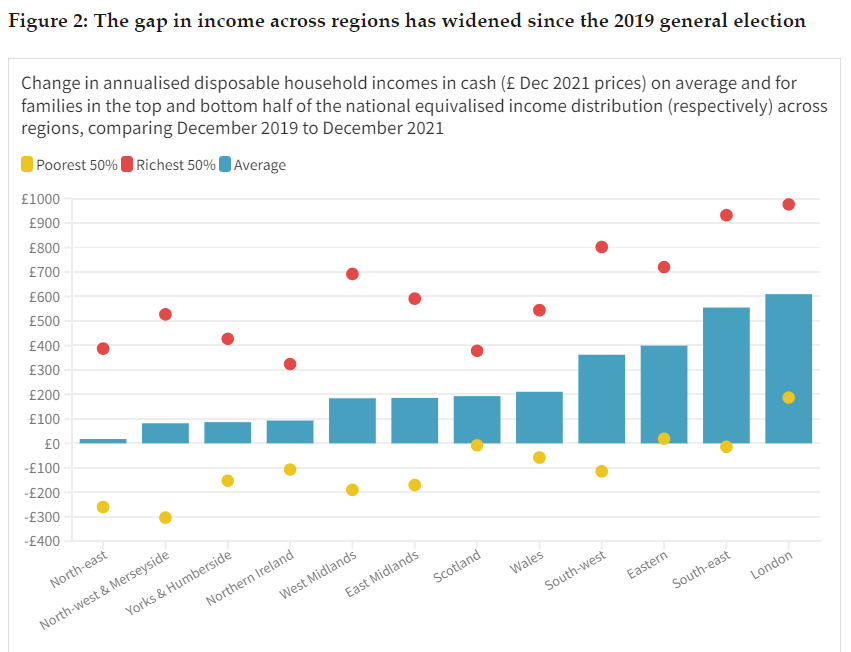By Andy Fenwick, Worcester South Labour member
“It’s the same the whole world over: It’s the poor what gets the blame. It’s the rich what gets the pleasure; Ain’t it all a bloomin’ shame” an anonymous street ballad of the late 19th century.
Recent research by the New Economic Foundation make it clear that living standards have fallen in the first two years of Johnson’s government, unless that is, you were well off to start with. Using government data from Department for Work and Pensions (DWP) and the Office for Budget Responsibility (OBR) the NEF has produced a damning analysis of Tory Britain.
The NEF report looks specifically at disparities between income levels. “Two years on from the election,” the opening words of the report say, “and almost halfway through the current parliament, this analysis presents new modelling looking at who has benefited most so far, and who has lost out.”
The coverage of this report in the media has attempted to weaken or dismiss the outcomes, namely that “half of UK families have seen their disposable incomes shrink in the last two years,” andby taking a wider definition of the report, incomes have ‘only’ been squeezed by £110 a year since 2019.
The overall picture of ‘winners’ and ‘losers’ shown in the NEF report is stark. Comparing December 2019 to December 2021, families with below median household income have seen their living standards squeezed right across the distribution (Figure 1, below). On an annualised basis, the poorest 50% of families have seen their disposable incomes squeezed by an average of £110 in real terms (here and henceforth in December 2021 prices), while the top 5% of families have seen gains of more than £3,300.

North East pay is only 87% of national average
However, if we examine regional variations a picture of wide economic disparity leaps out (Figure 2). The North East average pay is only 87% of the national average, therefore a fall of £259 a year has a greater impact on an annual income £21,580. Further analysis shows the misery heaped on single parents with Yorkshire and Humberside parents losing nearly £800 a year. This is during a period when the government is supposed to be ‘levelling up’

This sharp increase in inequality has been driven by the decisions made by government in their policy response to Covid-19. The UK economy contracted faster than most other major western economies in 2020, even after taking account of different methodological approaches to measuring GDP. This was in large part due to consecutive failures to lock down in time, initially in March 2020 and then again in September 2020.
The design of economic protections in the UK during the pandemic has resulted in less support, on average, for the poorest households. Those with less secure employment – for example those on fixed-term contracts and some in self-employment (even after self-employed income protection) – were more likely to fall through the cracks.
Top 5% have seven times the windfall as anyone else
At the other end of the income scale, windfall gains for the richest 5% have been seven times higher than for anyone else in the top half of the distribution. This reflects the relative insulation from the effects of the downturn for certain high paying jobs and occupations, as well as continued growth in international stock markets across the period, despite inflation and reduced activity elsewhere in the real global economy.
Far from levelling up, these results show that the government’s handling of the pandemic has led to the richest families and regions getting richer, while the poorest families are even poorer now in real terms than they were in the month of Johnson’s election victory. This would be an indictment of any government, let alone one where the promise to “level up” sits at the heart of its political and policy agenda. Worse still, the immediate outlook looks certain to deteriorate further, with prices expected to continue increasing, combined with the threat of a rise in interest rates
The 2019 Conservative manifesto promised “to unite and level up, spreading opportunity across the whole United Kingdom”. When Boris Johnson became Prime Minister, he doubled down on this promise to “level up across Britain”, with a focus on “forgotten people and the left behind towns”. He had just won a so-called ‘super majority’ in the house of commons, built from newly-won seats outside of traditional Tory heartlands, including poorer than average constituencies across the Midlands and North of England. Many presumed these places were among those in mind to benefit most from the ‘levelling up’ agenda. But just like all Tory promises, this has evaporated into thin air all we will see is further routes into poverty.
People could thrive, even faced with the challenge of a pandemic. But only if there was full social control of the main levers of the economy and the system was planned – ‘rigged’ – for everyone’s benefit and not just for a few.
The full NEF report can be found here. It is interesting and well worth looking at: full of economic data on wealth distribution.



